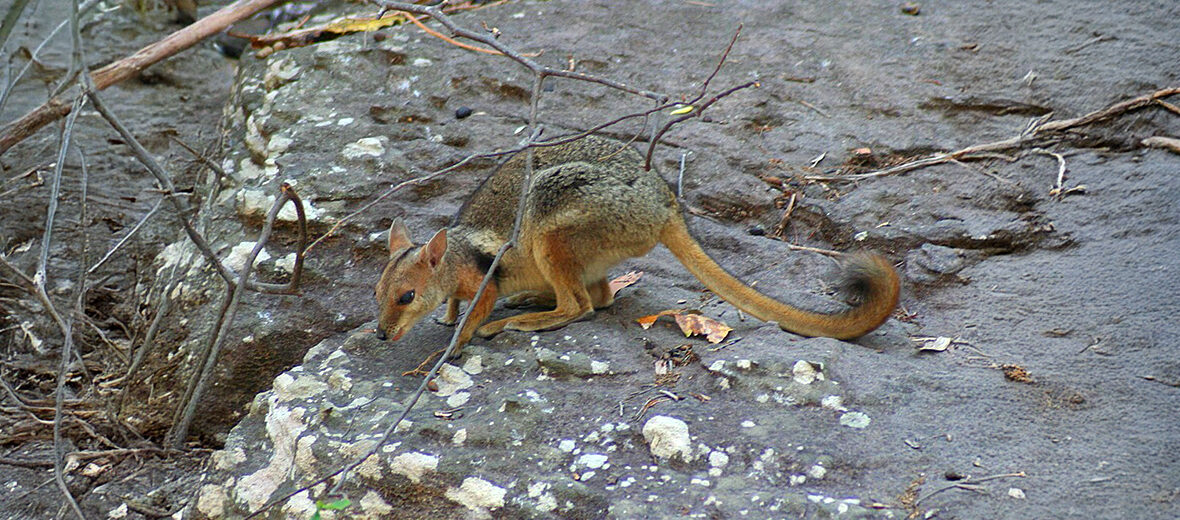
The short-eared rock-wallaby dwells in northern Australia, in the northernmost parts of the Northern Territory, as well as in Western Australia. These wallabies face the threats of habitat loss and destruction at the hands of fires and fire suppression efforts; and invasive species, such as feral cats and dogs that prey on these critters. They remain abundant enough, for now, to be listed as Least Concern by the IUCN. Their population trend is listed as unknown though.
First the Stats…
Scientific name: Petrogale brachyotis
Weight: Up to 12.1 lbs.
Length: Up to 21.7 inches, plus up to a 22 inch tail
Lifespan: Up to 15 years
Now on to the Facts!
1.) These wallabies number an estimated 20,000 wild individuals.
2.) They are quite a bit larger than their closest relatives, the eastern short-eared rock-wallaby, the monjon, and the nabarlek.
3.) Their preferred habitats are monsoonal rainforests and open grasslands, where they dwell among cliffs, hills, and valleys that provide hides and foraging capabilities.
4.) Short-eared rock-wallabies are herbivores (eat plant matter) that graze on a variety of local plants.
5.) They were first described by John Gould in 1841.
But wait, there’s more on the short-eared rock-wallaby!
6.) Kunwinjku in West Arnhem Land call the wallaby badbong, and these people traditionally travel with spears into the escarpment to hunt them.
7.) According to Kunwinjku elder Reverend Peterson Nganjmirra they will often trap badbongs in rocky countryside by setting fire to “spinifex” and flushing them out.
Did you know…?
The IUCN advisory group recommends study of the effect of fire regimens and other factors on this poorly monitored species.
8.) Females birth a single joey at a time, that measure no larger than a jellybean.
9.) The joey further develops in their mother’s marsupium (pouch) for up to an additional 7 months.
10.) At around 9 months of age, the joey stays out of their mother’s marsupium for good and starts their life in the wild.
Now a Short Short-Eared Rock-Wallaby Video!
This video talks about rock wallabies in general.
Be sure to share & comment below! Also, check out the Critter Science YouTube channel. Videos added regularly!

Want to suggest a critter for me to write about? Let me know here.
Some source material acquired from: Wikipedia & IUCN
Photo credit: Bäras



